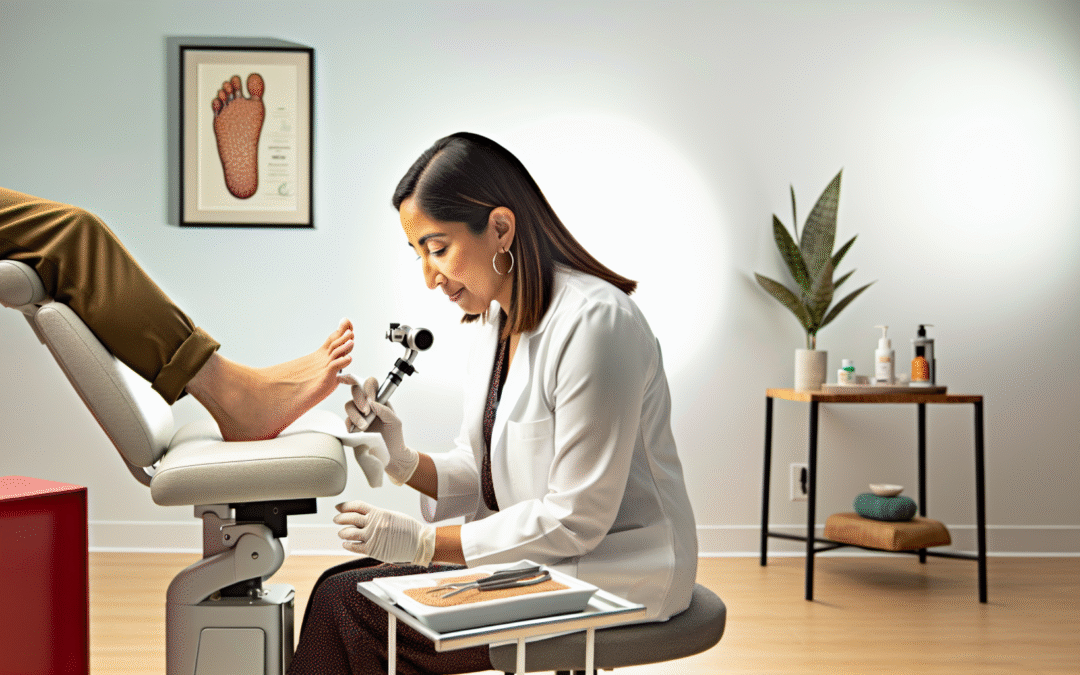Understanding Corns and Calluses: Prevention and Treatment Tips from Surrey’s Experts
When it comes to foot health, corns and calluses are two common conditions that can cause discomfort and concern for many individuals. At Island Foot Clinics, with locations across Kelowna, Victoria, Nanaimo, Penticton, Surrey, Abbotsford, Chilliwack, Cranbrook, White Rock, Vernon, Langley, and Courtenay, we frequently address these issues. This comprehensive guide will delve into the causes, prevention, and treatment of corns and calluses, helping you make informed decisions about your foot care.
What Are Corns and Calluses?
Corns and calluses are thickened layers of skin that develop as a protective response to friction or pressure. While they are similar, they have distinct characteristics:
- Corns: These are small, round, and often painful areas of thickened skin that typically form on the tops and sides of toes. They are more pronounced and can cause significant discomfort.
- Calluses: Generally larger and less painful, calluses are rough patches of skin that usually develop on the soles of the feet, particularly under the heels or balls. They are a response to prolonged pressure.
Causes of Corns and Calluses
The primary causes of corns and calluses include:
- Improper Footwear: Shoes that are too tight or have high heels can compress the toes and create friction, leading to corn formation. Similarly, loose shoes may cause your foot to slide and rub against the shoe, forming calluses.
- Foot Deformities: Conditions such as bunions, hammertoes, and flat feet can alter the way weight is distributed across your feet, increasing pressure in certain areas.
- Physical Activity: Activities that involve repetitive motions or prolonged periods of standing, such as running or dancing, can increase the likelihood of developing these skin conditions.
- Age: As we age, our skin loses some of its elasticity and cushioning, making it more prone to developing hard skin patches.
Prevention Tips for Corns and Calluses
Choose the Right Footwear
Footwear plays a critical role in preventing corns and calluses. Here are some tips:
- Proper Fit: Ensure your shoes fit well, providing adequate space for your toes to move comfortably. Avoid overly tight or loose footwear.
- Cushioned Support: Shoes with cushioned insoles and arch support can help distribute pressure more evenly across your feet, reducing stress on specific areas.
- Custom Orthotics: Consider custom orthotics, especially if you have structural foot issues. These devices can provide personalized cushioning and support, which is particularly beneficial for those with flat feet.
Foot Care Routine
Maintaining a regular foot care routine is essential for preventing corns and calluses:
- Moisturize: Keep your skin supple by applying a good moisturizer daily. This helps prevent dryness and cracking, which can exacerbate hard skin formation.
- Exfoliate: Use a pumice stone or foot file to gently remove dead skin. Regular exfoliation can prevent the buildup of thickened skin.
- Foot Soak: Soaking your feet in warm water can soften the skin, making it easier to remove calluses.
Treatment Options for Corns and Calluses
At-Home Treatments
For mild cases, at-home treatments can be effective:
- Padding: Use over-the-counter pads designed to relieve pressure on corns and calluses.
- Salicylic Acid: Products containing salicylic acid can help dissolve thickened skin. Apply carefully to avoid irritation to surrounding healthy skin.
Professional Treatments
When at-home treatments are insufficient, professional intervention might be necessary:
- Debridement: A podiatrist can safely remove thickened skin layers, which often provides immediate relief.
- Orthotics: Customized orthotic devices can address underlying structural causes, redistributing pressure across the foot.
- Surgery: In severe cases, surgical correction of underlying structural problems, such as bunions or hammertoes, may be advised.
Real-World Examples and Case Studies
At our Surrey clinic, we encountered a patient suffering from severe corns due to ill-fitting shoes and an underlying bunion. After a thorough assessment, we provided a tailored treatment plan involving custom orthotics and a footwear change. The patient experienced significant relief and a reduction in corn formation over several weeks.
In another instance in Kelowna, a dance instructor struggled with painful calluses. A combination of regular debridement, cushioned insoles, and adjusting her dance shoes made a remarkable difference, allowing her to continue her passion without discomfort.
Common Pitfalls to Avoid
When dealing with corns and calluses, avoid these common mistakes:
- DIY Surgery: Never attempt to cut or shave corns and calluses yourself. This can lead to infections and further complications.
- Ignoring Pain: Do not overlook persistent pain or discomfort. Seek professional advice to address the root cause.
- Inadequate Footwear: Continuing to wear inappropriate shoes negates any treatment efforts.
Future Trends and Innovations
In the field of podiatry, advancements are continually being made to improve foot care solutions:
- Cold Laser Therapy: Available in our Kelowna, Victoria, and Nanaimo clinics, this cutting-edge treatment is proving effective for a variety of foot issues, including fungal nails.
- 3D-Printed Orthotics: Offering a perfect fit, these orthotics are tailored to the exact contours of your feet, enhancing comfort and support.
Final Recommendations
For those struggling with corns and calluses, taking proactive steps in prevention and seeking timely treatment is crucial. At Island Foot Clinics, our team of podiatrists is dedicated to providing personalized care tailored to your needs. Whether it’s arch and heel pain management, custom orthotics, or advanced treatments like shockwave foot therapy, we are here to help you achieve optimal foot health.
This content is intended to provide general information, and should not be considered as professional or personalized advice. We encourage you to seek professional guidance and verify the information independently before making decisions based on this content.

